A small thing the rain brought out
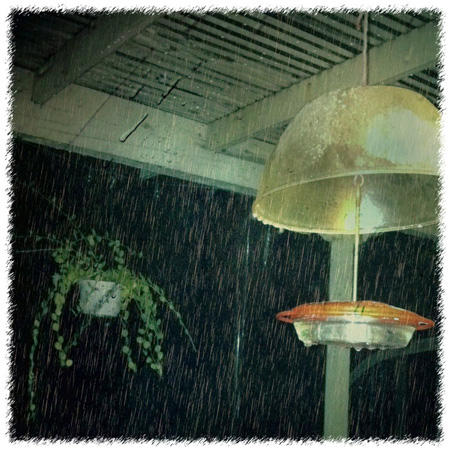 Other parts of the Phoenix area had been rained on already in this monsoon season, but so far our part of town only had dust. Big dust, impressive dust, haboob-style wall of silty grit in your eyes, teeth and hair dust, but no rain. At about four this morning, however, that changed with the slow onset of rumbling thunder, brief flashes of lightning, and (after suitable meteorological prelude) buckets of rain. About four tenths of an inch came down over a couple of hours, a perfect pace for sluicing dust, soaking gravelly soil, filling flower pots, and refreshing everyone and everything that lives here.
Other parts of the Phoenix area had been rained on already in this monsoon season, but so far our part of town only had dust. Big dust, impressive dust, haboob-style wall of silty grit in your eyes, teeth and hair dust, but no rain. At about four this morning, however, that changed with the slow onset of rumbling thunder, brief flashes of lightning, and (after suitable meteorological prelude) buckets of rain. About four tenths of an inch came down over a couple of hours, a perfect pace for sluicing dust, soaking gravelly soil, filling flower pots, and refreshing everyone and everything that lives here.
Lots of things come out of the ground during heavy rains: Spadefoots, scorpions, centipedes, and various snakes either choose to or are forced to emerge from their underground refuges to flee the flood or to hunt 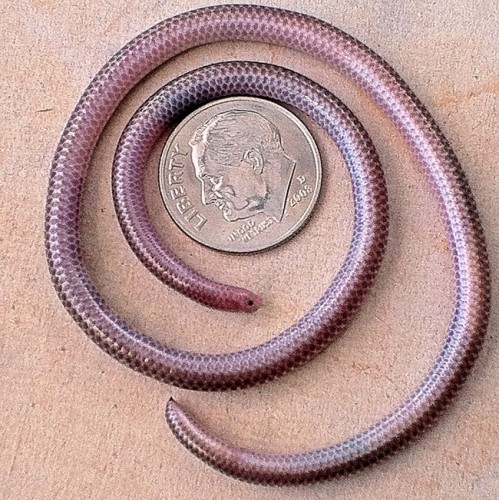 others who have come out to drink, mate, or search for food. Unfortunately, a small hunter with inadequate eyesight and no capacity for swimming fell victim to our pool during last night’s downpour: a tiny Western Threadsnake. Not good for the snake, but good for photography. We’ve seen these guys in the yard a only couple of times before, usually unearthed during gardening and gently reburied, but we’ve never managed pictures.
others who have come out to drink, mate, or search for food. Unfortunately, a small hunter with inadequate eyesight and no capacity for swimming fell victim to our pool during last night’s downpour: a tiny Western Threadsnake. Not good for the snake, but good for photography. We’ve seen these guys in the yard a only couple of times before, usually unearthed during gardening and gently reburied, but we’ve never managed pictures.
<< Western Threadsnake (Leptotyphlops humilis), with a dime for scale. Its scales are so translucent that you can see a couple of its last meals as dark areas in various points along its digestive system.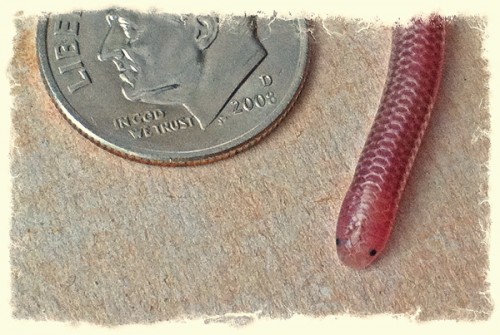
Threadsnakes are tiny silvery-pink worm-like snakes with two blunt ends that look alike, except that the tail ends in a harmless spine which it will poke aggressors with defensively (on larger nuisances, such as humans, this has no effect). The other end has its nearly featureless face, which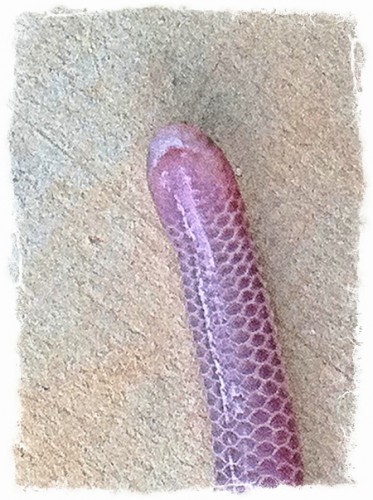 consists of two darkish spots below the scales that are eyes and a small, practically toothless mouth. >>
consists of two darkish spots below the scales that are eyes and a small, practically toothless mouth. >>
The eyes are almost blind because the snake lives predominantly underground, and the mouth is toothless because the little snake’s prey — ants, termites, their larvæ and the like — are swallowed whole. In general, the entire snake maxes out at 15″ in length, the last 0.3″ inch of which is the stubby tail. As you can see, this one was barely 10″ from snout to tail-tip; here’s a picture of my rusty studio straight edge, with threadsnake for scale, a reptilian Dinky Dude of the Desert: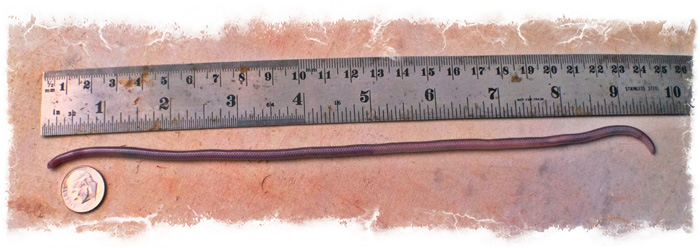
(All photos A.Shock, click to enlarge)

Very interesting, I never knew they existed or maybe just thought they were big worms — I garden without glasses! Thanks for sharing, you have the most interesting visitors!